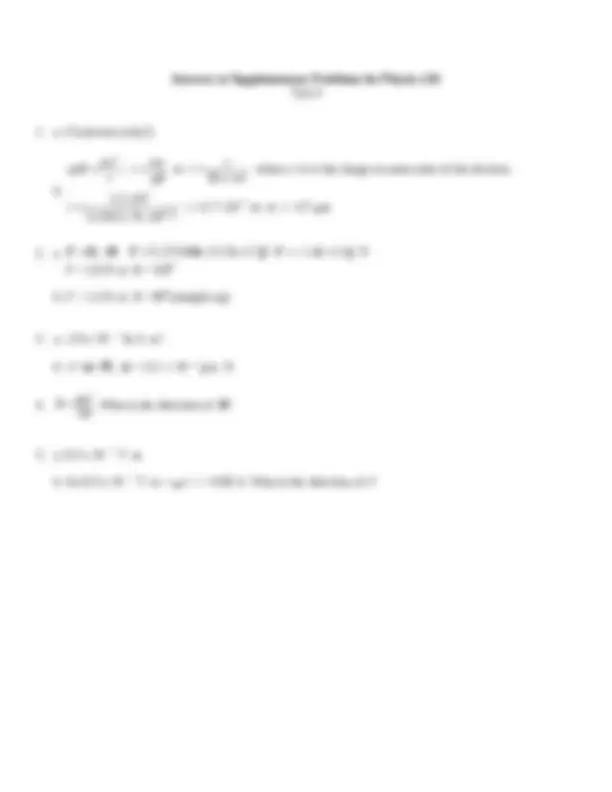



Study with the several resources on Docsity

Earn points by helping other students or get them with a premium plan


Prepare for your exams
Study with the several resources on Docsity

Earn points to download
Earn points by helping other students or get them with a premium plan
Community
Ask the community for help and clear up your study doubts
Discover the best universities in your country according to Docsity users
Free resources
Download our free guides on studying techniques, anxiety management strategies, and thesis advice from Docsity tutors
A set of supplementary problems for the physics 241 course, focusing on magnetic fields and moving charges. The problems involve an electron moving in a circular path in a magnetic field, a conducting bar in a uniform magnetic field, a circular loop of wire carrying a current, and a semicircular conductor. Students are asked to find the radius of the electron's path, the force on a conducting bar, the magnetic dipole moment and torque on a loop, and the magnetic field at a point using the biot-savart law.
Typology: Exams
1 / 2

This page cannot be seen from the preview
Don't miss anything!


(^) P Figure 1 i i Supplementary Problems for PHYS 241 Test 4
C
where L i is the length vector of the i th side. (The acute angle each vector B i makes with L i is shown in parentheses.) b. Use Ampere’s law to estimate I. What is the direction of this current?
2.1 T (12) 2.5 T (20) 3.0 T 3.2 T (10) (0) 3.2 T (0) 2.9 T (15) Figure 2
Answers to Supplementary Problems for Physics 241 Test 4
2 6 5 11 ; or where / is the charge-to-mass ratio of the electron. / 1.5 10 ; 1.7 10 m or 17 m 0.50 1.76 10 mv mv v qvB r r e m r qB B e m r r r
F = 2.8 N at = 120 b. F = 1.4 N at = 90 (straight up)
i B R
(^) What is the direction of B?